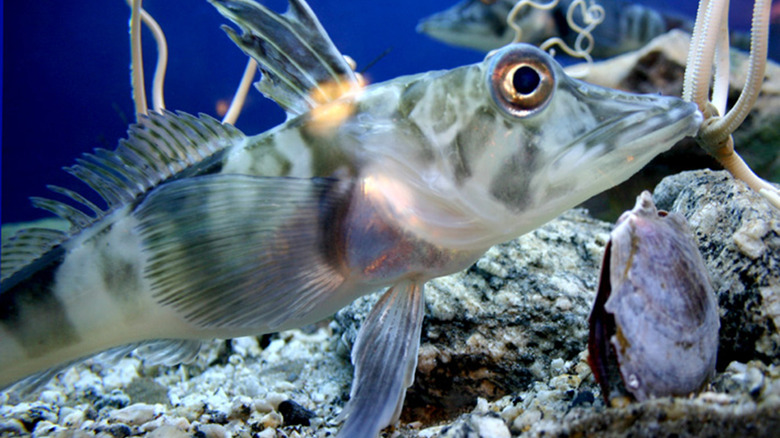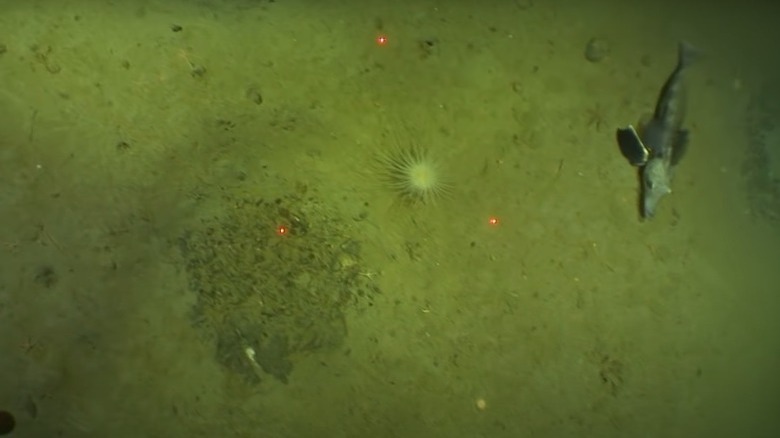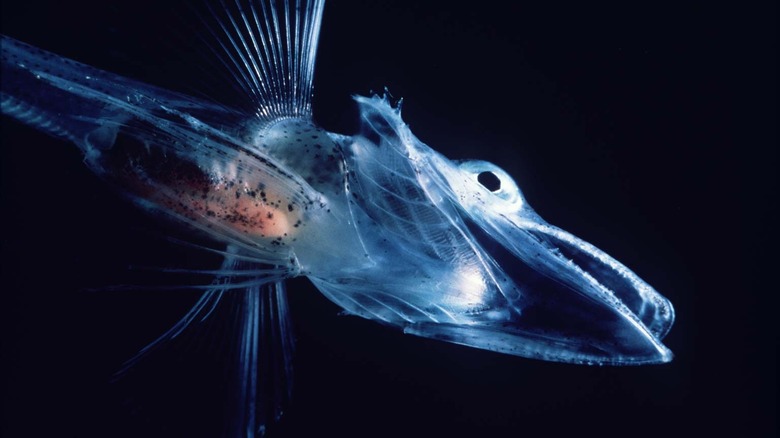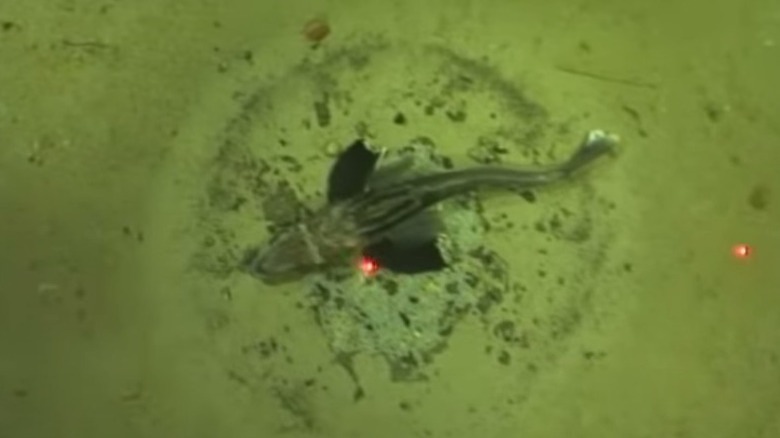Antarctica's Massive Fish Nursery Is Home To Over 60 Million Icefish Nests
In late 1927, a repurposed sealing boat, the Norvegia, left the fjords of Norway on an expedition to find untapped populations of whales. The boat headed south to the largely unexplored and frigid waters surrounding Antarctica. Although its primary mission was to find whales to recoup losses from diminishing profits due to declining cetacean populations elsewhere, the expedition was not blind to the scientific potential of its journey, and so brought along a young zoologist named Ditlef Rustad (via The Geographical Journal).
Rustad left his small mark on history the day after Christmas in 1927 off the coast of the world's most remote island. Trawling for fish and plankton, he discovered the icefish — an odd scaleless fish that he described as colorless (via The Scientist). Nearly 100 years later, scientists aboard the German polar research vessel Polarstern would leave their mark on history when they discovered a breeding colony of icefish unlike anything the world had ever seen (via CNN).
Unprecedented discovery
Researchers were doing a routine survey of benthic (dwelling on the ocean floor) animal life in the Weddell Sea. The area they were imaging was over 1,300 feet deep and at the edge of Antarctica's continental shelf. As they were towing their camera through the deep waters, they noticed that they were seeing a lot of icefish nests. Like, a lot. The nests are basically bowls excavated by the icefish from the sediment of the sea floor. The nests are about six inches deep, 30 inches across, and filled with over 1,500 eggs, each one watched over by an icefish (via Current Biology).
Their first survey lasted for four hours over nearly four miles and they saw nothing but icefish nests, one after the other. Over the course of three more surveys, the team imaged over 16,000 individual nests. Given the uniform density of the nests, and the 93-square-mile extent of the colony, there were estimated to be around 60 million nests (via CNN). Nest building isn't universal in fishes, but it's common enough not to be unusual. Still, nothing like this colony — which is four times the size of Manhattan — has ever been discovered.
Blood white
Being the inhabitants of the world's largest nesting colony isn't the only thing that makes icefish unique. The peculiar fish discovered by Ditlef Rustad in 1927 is actually a member of a family of 16 species collectively known as icefish. What truly makes these fish unique is the fact that they are the only vertebrates that don't have red blood — in fact, they don't have any hemoglobin (via Britannica).
This lack of hemoglobin is something of a mixed blessing. On the one hand, because they don't have a blood molecule purpose built for carrying oxygen, their blood can only carry about 10% as much O₂ as similar red-blooded fish (via Scientific American). On the other hand, at the frigid temperatures of the Southern Ocean, hemoglobin loses its effectiveness and body fluids thicken, problems the icefish don't have to deal with (via Proceedings of the National Academy of Sciences).
Surprisingly, scientists think that the loss of hemoglobin was more likely an accident than an evolutionary adaptation. They note the number of physiological adaptations the icefish have developed to deal with the reduced oxygen-carrying capacity of their blood. Their hearts are larger, their blood vessels are broader and more dense, and 22% of their energy production is devoted to their circulatory system.
Circle of life
The scientists aren't sure exactly why 60 million white-blooded fish have come to the Weddell Sea to raise a family, but they do have some clues in the local environment. In the dark depths of the Southern Ocean is a mass of water called the Warm Deep Water that is about 30 degrees — just above the freezing point for salt water. This water comes up onto the continental shelf via underwater trenches and flows across the breeding colony (via Current Biology).
Above the breeding colony, the researchers discovered a higher-than-normal concentration of organic compounds which they suspect serves as food for juvenile icefish, as well as for zooplankton which serve as food for the nesting adults. It's believed that this breeding colony, which accounts for over 60,000 tons of biomass, is a pillar of the local ecosystem. The juvenile icefish are a rich food source for other ocean predators which the adult icefish prey on. The adult icefish themselves are likely to be preyed upon by the local seal population, which is known to dive to the depths at which the icefish nest. Given how integral the brooding colony is to the local ecology, the researchers are calling for the area to be protected.



